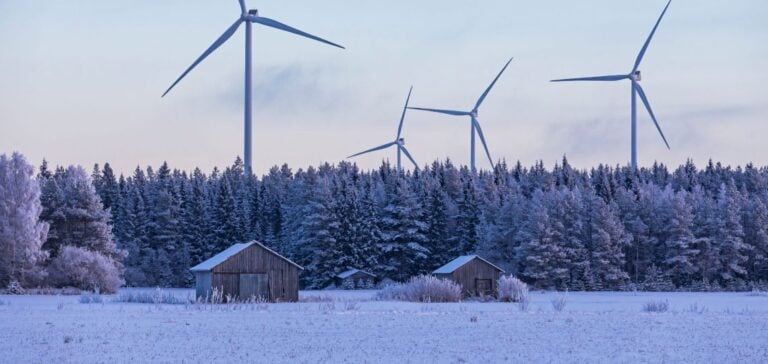This weekend, Finland achieved a historic milestone by producing more than half of its electricity through wind energy for the first time. The national grid operator, Fingrid, reported that autumnal windy conditions enabled an average production of 6.47 gigawatts every 15 minutes around 8:00 p.m. (6:00 p.m. GMT) on Sunday evening. This achievement marks a record for the Nordic country, according to Heini Kanerva, Fingrid’s spokesperson.
Favorable Winds and Increased Capacity
The increase in Finland’s wind energy production is explained by a combination of intense seasonal winds and an expansion of wind power infrastructure. Finland now has over 1,600 wind turbines, with a maximum potential capacity exceeding seven gigawatts. This additional capacity results from recent investments in wind farms, reflecting the country’s desire to diversify its energy sources.
In response to this wind energy record, Finland’s nuclear and hydroelectric power plants temporarily reduced their output. Historically, Finland has relied on its two nuclear plants for the majority of its electricity, but wind energy occupies an increasing share in its energy mix. Fingrid notes that this shift in the balance of energy sources was anticipated, given the investments in wind infrastructure and favorable climate forecasts.
Finland’s Rapid Wind Energy Expansion
Finland has ramped up its wind energy development to meet ambitious clean energy targets. The Finnish Energy Agency indicates that the number of wind farms will continue to grow in the coming years, supported by public and private initiatives. This effort is part of a national strategy to gradually reduce reliance on fossil fuels and align the country with European climate commitments.
The development of wind energy infrastructure also provides a response to increased energy needs, especially during winter when electricity demand rises. Fingrid estimates that wind energy production could soon stabilize the Finnish grid further by providing a reliable and steady renewable energy source.
Wind Energy Challenges and Opportunities in Europe
Finland’s success highlights the opportunities and challenges associated with wind energy in Europe. Other European countries have also seen notable increases in wind power production, aiding in reducing CO₂ emissions. However, this expansion requires greater management of electrical grids to integrate fluctuations in wind power generation. In Finland, Fingrid had to adjust hydroelectric and nuclear production to stabilize the grid in response to this wind energy surge, illustrating the importance of flexible management of various energy sources.
With these promising results, Finland continues to explore new options to strengthen its grid and support the transition to clean energy while progressively reducing its national carbon footprint.





















